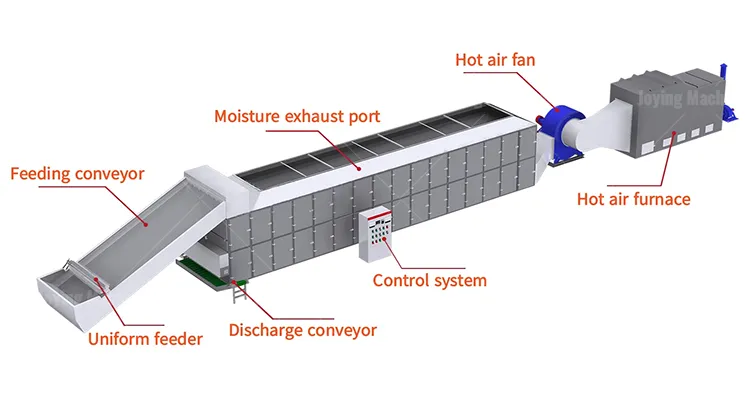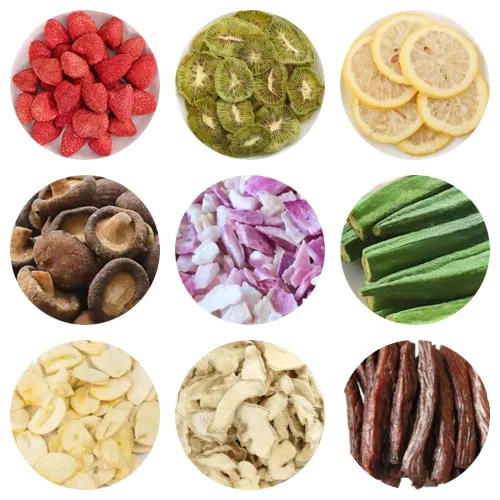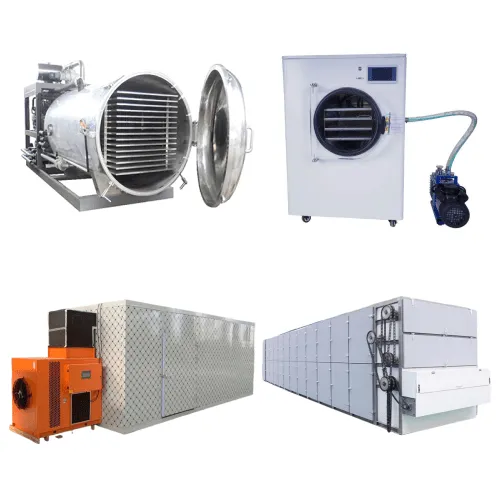
Belt dryers are essential in industries like food processing, agriculture, and pharmaceuticals. They are designed to efficiently dry large quantities of materials, ensuring consistent quality and reduced moisture content. But what makes a belt dryer work so effectively? Let’s break down its main components and understand how they contribute to the drying process.
A belt dryer consists of several key components, including the conveyor belt system, heating system, air circulation system, control panel, and insulation. These parts work together to ensure efficient and uniform drying of materials like fruits, vegetables, and other agricultural products.
If you’ve ever wondered how a belt dryer achieves such precise drying results, you’re in the right place. In this article, we’ll explore each component in detail, explaining its role and importance in the overall drying process. Whether you’re a food processor, farmer, or just curious about industrial drying, this guide will give you a clear understanding of how belt dryers operate.
1. The Conveyor Belt System
The conveyor belt system is the heart of a belt dryer. It’s responsible for moving the material through the drying chamber, ensuring even exposure to heat and airflow.
The conveyor belt system is made of durable, heat-resistant materials like stainless steel or food-grade mesh. It moves materials at a controlled speed, allowing for consistent drying without overexposure to heat.
Imagine the conveyor belt as a slow-moving treadmill for your fruits or vegetables. The speed can be adjusted depending on the type of material and the desired moisture level. For example, delicate herbs might require a slower speed to prevent burning, while thicker slices of fruit can handle a faster pace. The belt’s design also ensures that materials are spread evenly, preventing clumps and ensuring uniform drying.
2. The Heating System
The heating system is what provides the necessary heat to remove moisture from the materials. It’s a critical component that determines the efficiency and effectiveness of the drying process.
Belt dryers typically use electric heaters, steam, or gas burners as their heat source. The system is designed to maintain a consistent temperature throughout the drying chamber, ensuring optimal drying conditions.
Think of the heating system as the engine of the belt dryer. It needs to be powerful enough to generate sufficient heat but also precise enough to avoid overheating. Modern belt dryers often come with temperature controls that allow operators to set the exact heat level required for different materials. This flexibility is especially useful when drying a variety of crops, each with its own unique drying requirements.
3. The Air Circulation System
The air circulation system ensures that heat is distributed evenly across the drying chamber. Without proper airflow, some materials might dry faster than others, leading to inconsistent results.
This system includes fans and ducts that circulate hot air throughout the chamber. It helps maintain uniform temperature and humidity levels, ensuring that all materials dry at the same rate.
Picture the air circulation system as a giant fan that blows hot air over your materials. The fans are strategically placed to cover every corner of the drying chamber, ensuring no spot is left untouched. This even distribution of heat is crucial for achieving high-quality dried products, whether you’re drying mango slices or herbal leaves.
4. The Control Panel
The control panel is the brain of the belt dryer. It allows operators to monitor and adjust various parameters, such as temperature, belt speed, and drying time.
Modern belt dryers come with user-friendly control panels that display real-time data. Operators can set specific drying programs or make manual adjustments to suit different materials.
Using the control panel is like having a remote control for your dryer. You can tweak the settings to achieve the perfect drying conditions for your specific needs. For instance, if you’re drying bananas, you might set a lower temperature and longer drying time to preserve their natural sweetness. The control panel makes it easy to experiment and find the best settings for each crop.
5. The Insulation
Insulation is often overlooked but plays a vital role in maintaining the efficiency of a belt dryer. It helps retain heat within the drying chamber, reducing energy consumption and ensuring consistent drying conditions.
High-quality insulation materials, such as fiberglass or mineral wool, are used to line the walls of the drying chamber. This prevents heat loss and keeps the internal temperature stable.
Imagine trying to dry clothes in a room with open windows on a cold day. The heat would escape, and your clothes would take forever to dry. The same principle applies to belt dryers. Proper insulation ensures that all the heat generated by the heating system stays inside the chamber, making the drying process faster and more energy-efficient.
Conclusion
Belt dryers are complex machines with several key components working together to achieve efficient and consistent drying. From the conveyor belt system to the heating and air circulation systems, each part plays a crucial role in ensuring high-quality results. Understanding these components can help you make informed decisions when choosing or operating a belt dryer for your business. Whether you’re drying fruits, vegetables, or herbs, a well-designed belt dryer can make all the difference in preserving quality and reducing costs.



